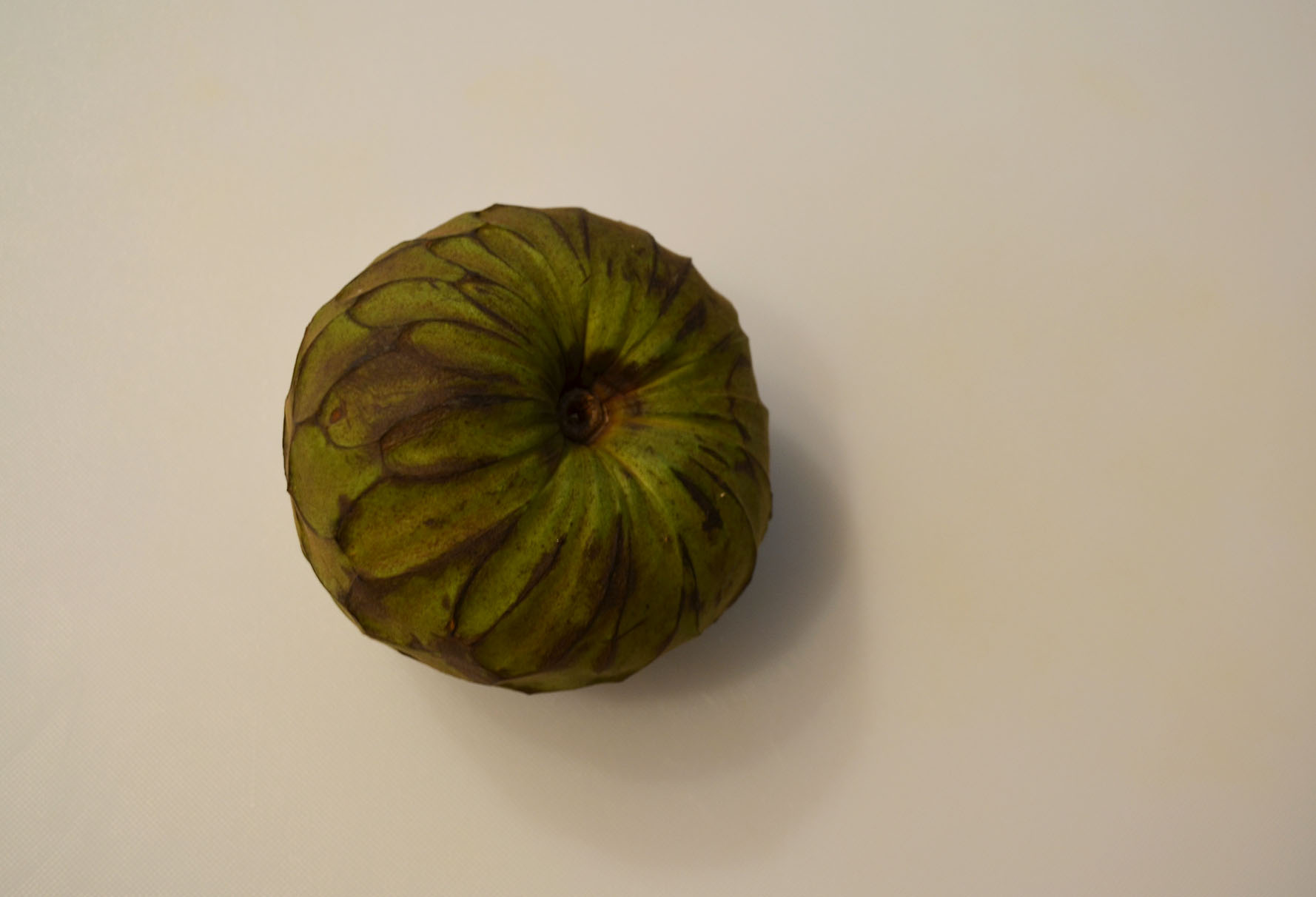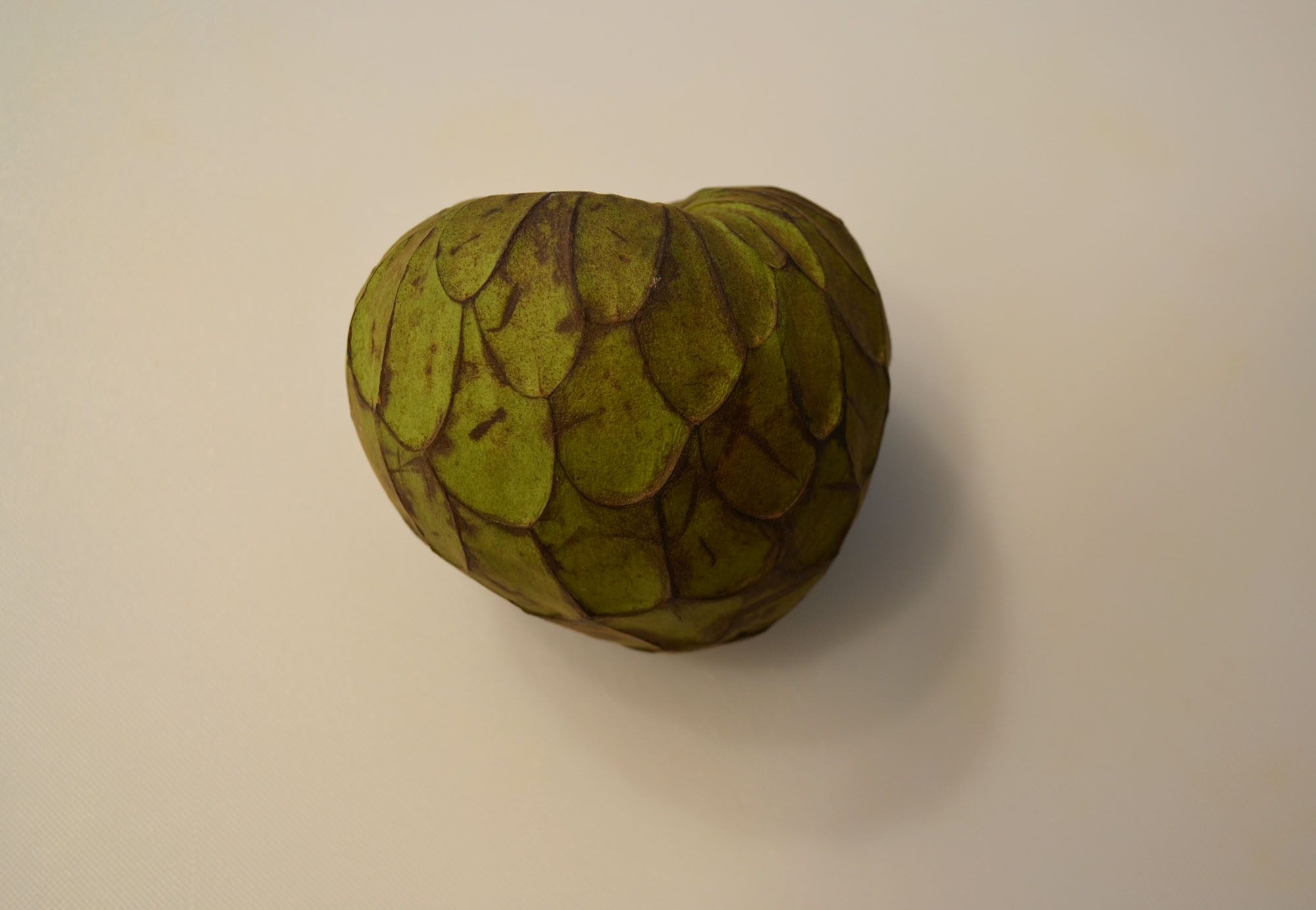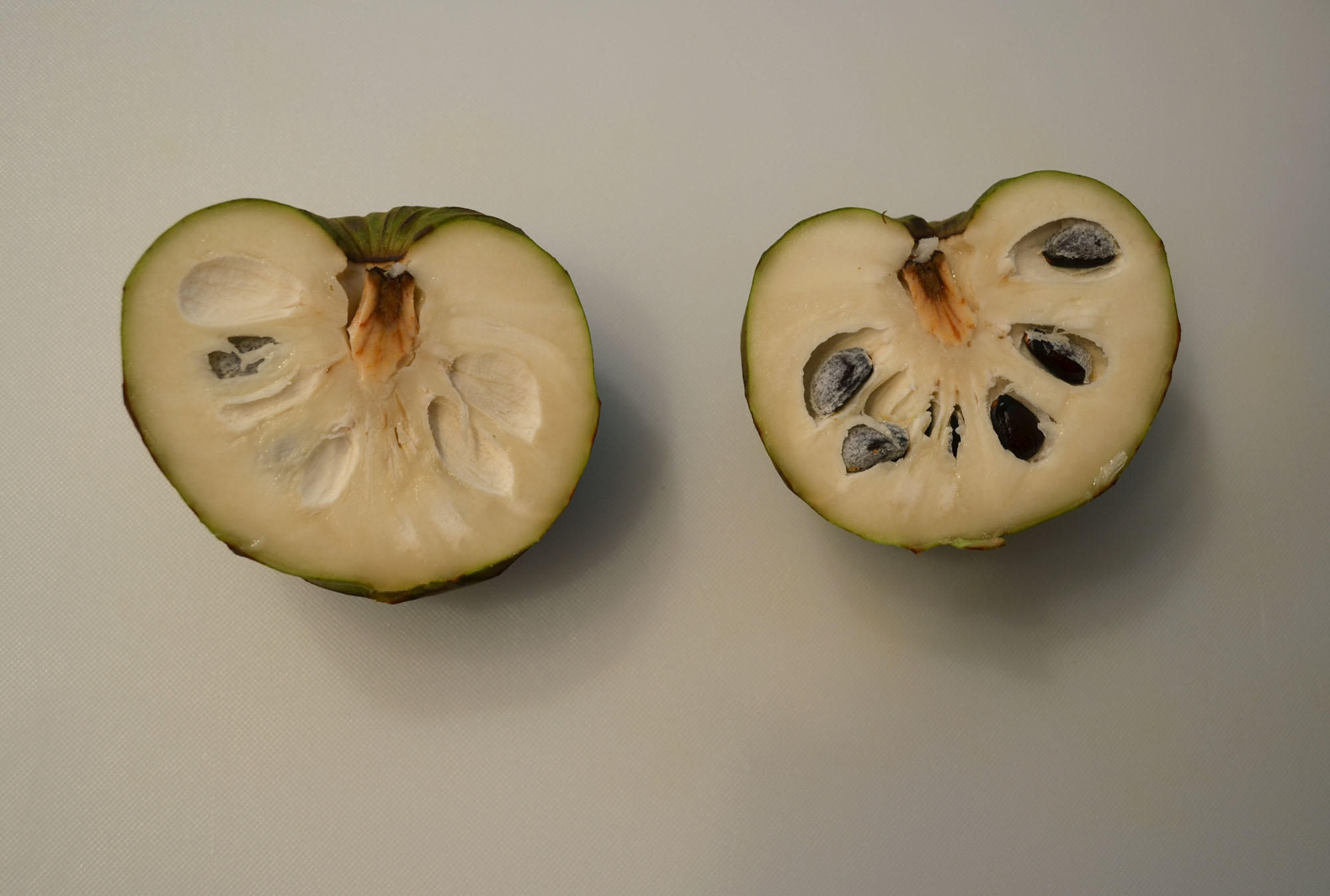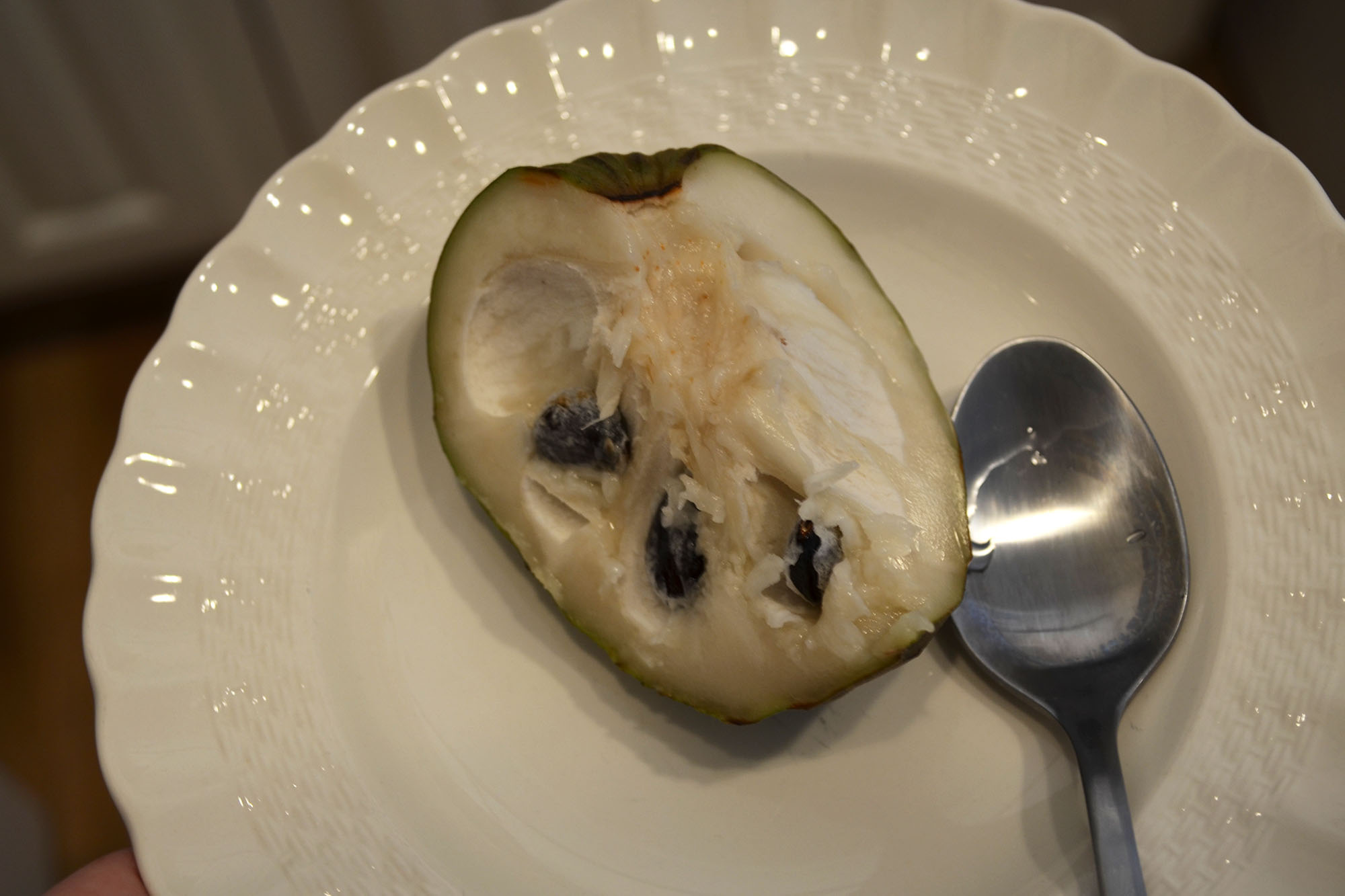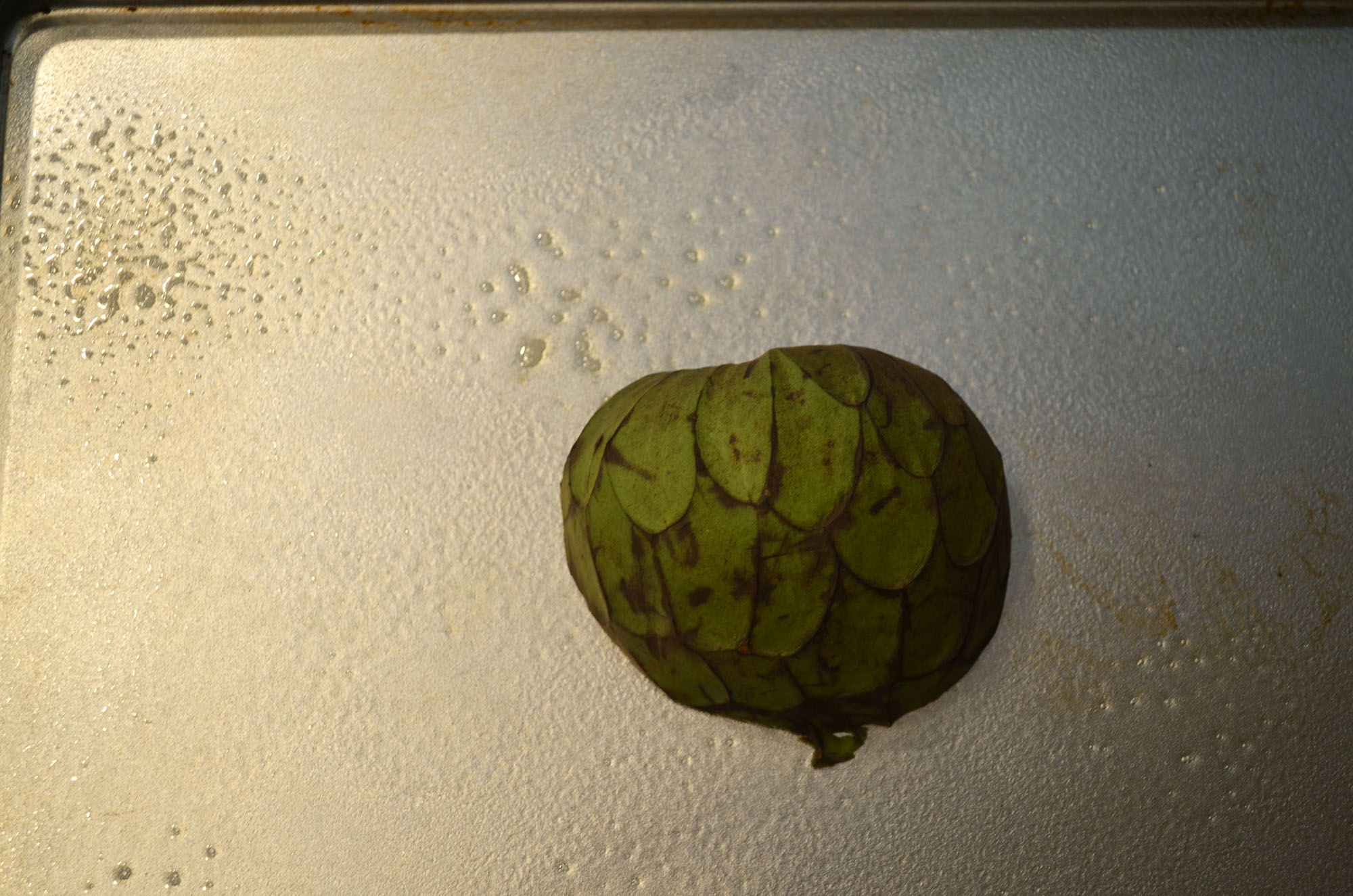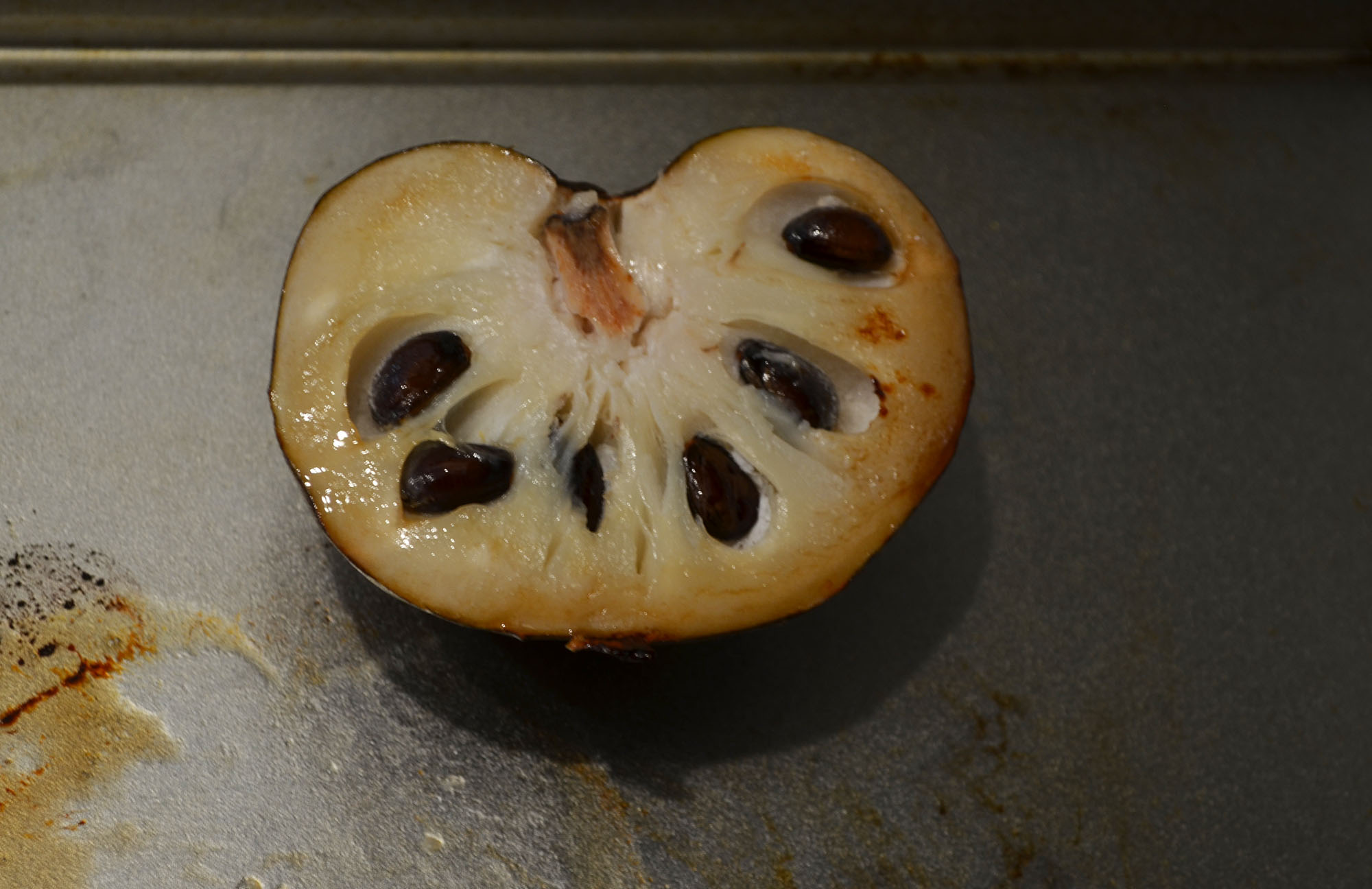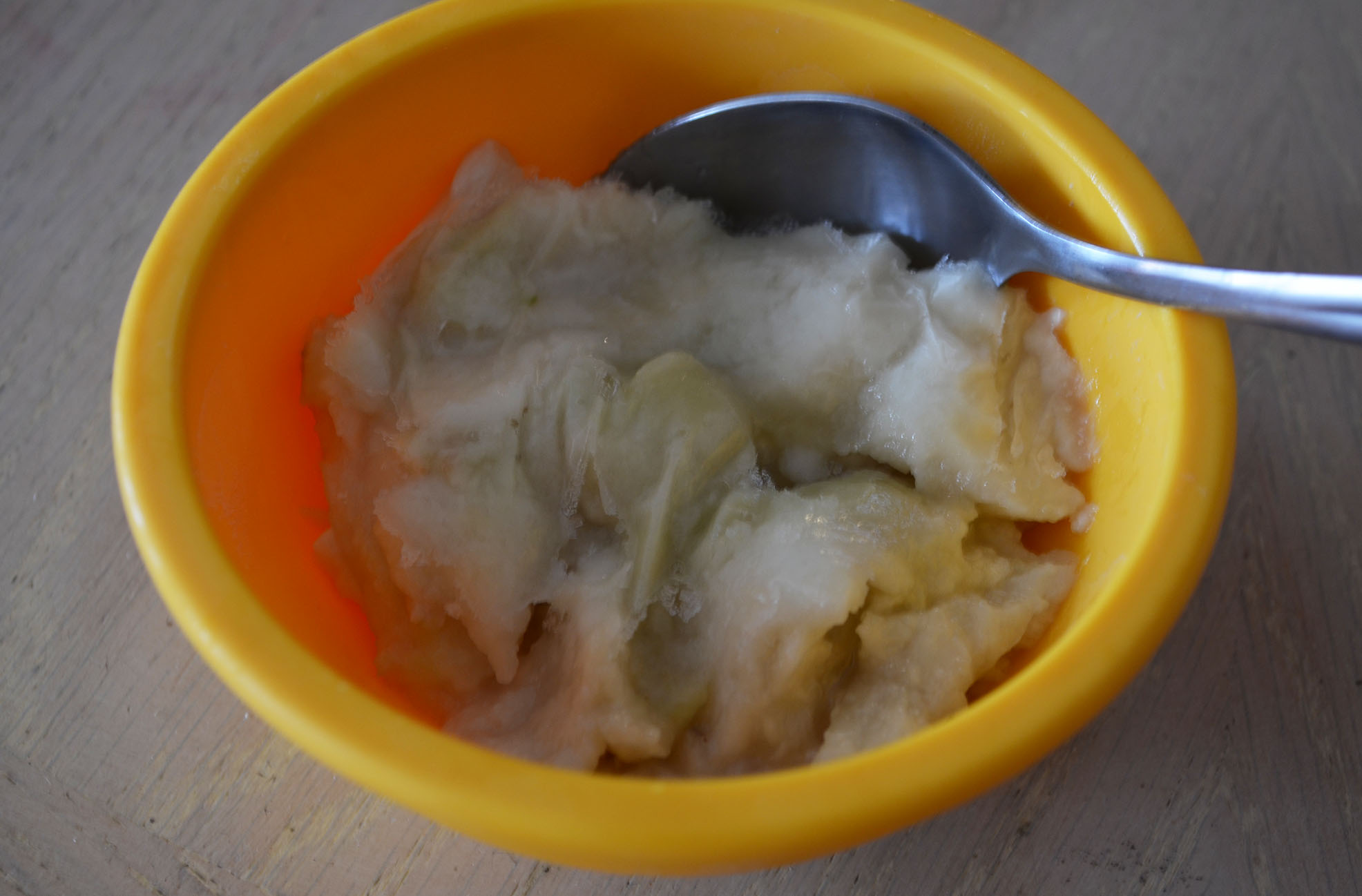this post has been longgggggg time coming, but get excited guys, because it’s time to try a new fruit! this time, we’re tasting cherimoya. i think you’re going to love it.
also known as: chirimoya; chirimolla; “the ice cream fruit”
in the same family as: custard apple, soursop [guanabana], sweetsop [sugar apple], atemoya. the family is called annonaceae.
geography: it is native to the andean valley – ecuador and peru – but is now grown in several different south american countries, spain, israel, lebanon, thailand, india, kenya, california, etc.
how it grows: small, dense tree – 15-30 ft tall
season: late november through may
where i got it: kroger
what it looks like: brownish green when ripe [can also have a goldish hue]. the skin is thin and fabric-y feeling yet tough, and it has a primitive look to it, like green armor or the scales of a reptile. when ripe, the fruit should yield to gentle pressure, similar to an avocado. cherimoyas may be symmetrical, lopsided, heart-shaped, egg-shaped, globe-shaped, or irregular. they’re generally 4-8 inches long and around 4 inches long. the flesh is ivory-colored [it may have a slight greenish tinge] and studded with large inedible black seeds. the flesh does tend to oxidize once cut, but it can be dipped in lemon or lime juice to prevent darkening.
what it smells like: sweet, fragrant, tropical fruit aroma
what it tastes like: DO NOT EAT THE SKIN OR SEEDS. they are toxic. but oh, the flesh! it looks a little stringy and fibrous, but it isn’t at all – it melts in your mouth. it’s soft like a pear only more smooth and less gritty. juicy and custard-like and creamy. the flavor is a wonderful, sweet, delicate mix of tropical fruit. i tasted pineapple and banana and a little strawberry, but others have said vanilla, papaya, mango, lemon, coconut, and even bubblegum! it really is quite fantastic.
how to eat it: i ate one raw – i just quartered it and ate it with a spoon, which was delicious. i halved the other one to try two different ways: i placed one half face-down on a greased cookie sheet and baked at 400 degrees for about 15 minutes, until the flesh was golden-brown. i ate it with a spoon while still warm, and i got different flavors than when i ate it raw. there was a earthiness and spiciness to it that tasted a little more like mango to me – especially the skin of a mango. it also reminded me of the baked curried peaches and pears that my mom used to make and i always loved. i scooped out the flesh of the other half, put it in a bowl, and froze it. after a few hours, i took it out and ate it immediately. it looked like mashed ripe bananas that were put in the freezer – it was beginning to brown a bit. but once i got past the color, i really enjoyed the taste. once again, it tasted a lot like pineapple with a bit of banana. the texture was nice and it was very refreshing. totally yummy. it would also be good cubed on salads, added to a smoothie, or frozen with coconut milk into semifreddo. some people even puree it and use it as a mousse or pie filling.
storage: ripen at room temperature. once ripened, cherimoya may be stored in the refrigerator for 1-2 days, but no longer, as the fruit is susceptible to chill injury.
nutritional content: cherimoya is an excellent source of vitamin c and a good source of potassium, fiber, and vitamin b complex. it’s also rich in antioxidants and calcium.
other interesting facts: mark twain once called cherimoya “the most delicious fruit known to men.” “cherimoya” is derived from the quechua [incan] word “chirimya,” which means “cold seeds,” because the seeds will germinate in altitudes of up to 6,000 feet. the seeds, leaves, and limbs contain poisonous alkaloids that have been used to kill lice.
sources: i know produce, food blogga, serious eats, specialty produce
click here to go to my last produce exploration post!
